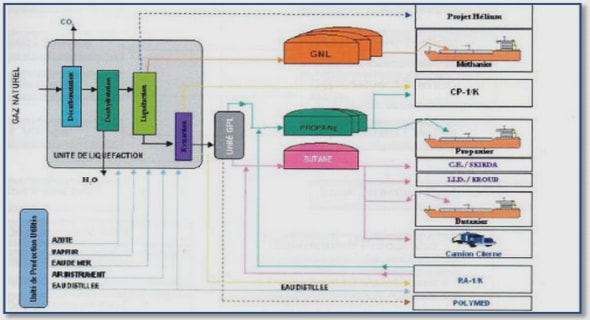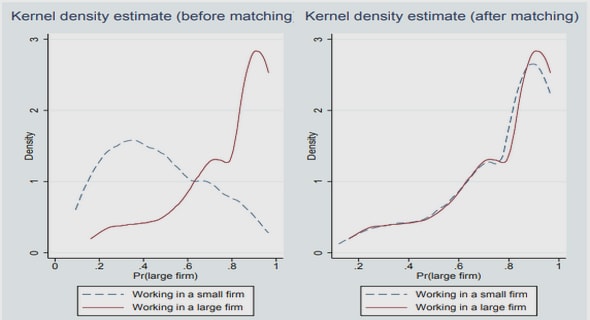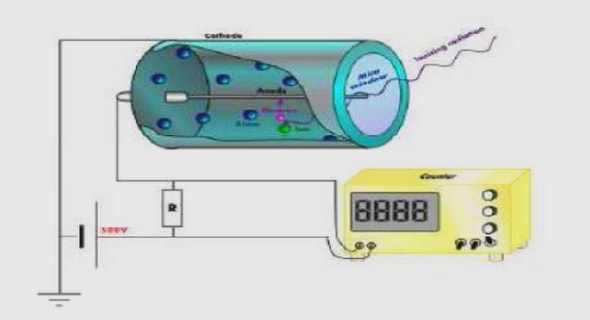Get Complete Project Material File(s) Now! »
Non-linear approximations to gravitational instability
When fluctuations become strongly non-linear in the density field, Eulerian perturbation theory breaks down. Lagrangian perturbation theory is often more successful, since the Lagrangian picture is intrinsically non-linear in the density field (see e.g. equation (1.125)). A small perturbation in the Lagrangian displacement field carries a considerable amount of non-linear information about the corresponding Eulerian density and velocity fields. However, at some point, computers are required to study gravitational instability (in particular through N-body simulations), the important drawback being that the treatment becomes numerical instead of analytical. We will adopt this approach in this thesis. However, several non-linear approximations to the equations of motion have been suggested in the literature to allow the extrapolation of analytical calculations in the non-linear regime. We now briefly review some of them.
Non-linear approximations consist of replacing one of the equations of the dynamics (Poisson – equation (1.72) –, continuity – equation (1.79) – or Euler – equation (1.80)) by a different assumption.4 In general, the Poisson equation is replaced (Munshi & Starobinsky, 1994). These modified dynamics are often local, in the sense described above for the ZA, in order to provide a simpler way of calculating the evolution of fluctuations than the full non-local dynamics.
The Zel’dovich approximation as a non-linear approximation
As we have seen in section 1.3, in Eulerian dynamics, non-linearity is encoded in the Poisson equation, equation (1.72), ΔΦ = 4πGa2 ¯ρδ. The goal of this paragraph is to see what replaces the Poisson equation in the Eulerian description of the ZA. From this point of view, the ZA is the original non-linear Eulerian approximation, and it remains one of the most famous.
If we restrict our attention to potential movements, the peculiar velocity field u is irrotational. It can be written as the gradient of a velocity potential, u = −∇xV a . (1.139).
As discussed before, the main reason to restrict to this case is the decay of vortical perturbations. It is then possible to postulate various forms for the velocity potential V . The ZA corresponds to the Ansatz (Munshi & Starobinsky, 1994; Hui & Bertschinger, 1996; appendix B in Scoccimarro, 1997) V = 2fa 3 mH .
Perturbative and non-perturbative prescriptions for
Even if ψ does not contain all the information about the vector displacement field Ψ, knowledge of its evolution allows for methods to produce approximate particle realizations at the desired redshift, for the variety of cosmological applications described in the introduction of this thesis. These methods include, but are not limited to, the ZA and 2LPT. On the contrary, 3LPT involves a non-zero rotational component and comes at the expense of significantly greater complexity, for an agreement with full gravity that does not improve substantially (Buchert, Melott & Weiß, 1994; Bouchet et al., 1995; Sahni & Shandarin, 1996). Since we have adopted the approximation that the displacement field is potential, we stop our analysis of LPT at second order.
However, we will describe various non-perturbative schemes. Importantly, ψ-based methods are essentially as fast as producing initial conditions for N-body simulations. Their implementation can be decomposed in several steps:
1. Generation of a voxel-wise initial-density field δ. It is typically a grf, given a prescription for the linear power spectrum (see section B.6), but it can also include primordial non-Gaussianities.
2. Estimation of ψ from δ at the desired redshift.
3. Generation of the final vector displacement field Ψ from ψ with an inverse-divergence operator.
4. Application of Ψ to the particles of a regular Lagrangian lattice to get their final positions.
In practice, steps 1 and 3 are performed in Fourier space, using fast Fourier transforms to translate between configuration space and Fourier space when necessary. In the remainder of this paragraph, we review various prescriptions that have been proposed in the literature to estimate ψ(q, τ ) from δ(q) (step 2).
Comparison of structure types in LPT and N-body dynamics
In this section, we perform a study of differences in structure types in density fields predicted by LPT and N-body simulations. We employ the web-type classification algorithm proposed by Hahn et al. (2007a), which relies on estimating the eigenvalues of the Hessian of the gravitational potential (see section C.2). This algorithm dissects the voxels into four different web types (voids, sheets, filaments and clusters). Due to the different representations of the non-linear regime of structure formation, we expect differences in structure types in LPT and N-body simulations. In particular, overdense clusters are objects in the strongly non-linear regime, far beyond shell-crossing, where predictions of LPT fail, while underdense voids are believed to be better apprehended (e.g. Bernardeau et al., 2002).
Probability theory as extended logic
As outlined in the seminal work of Cox (1946), popularized and generalized by Jaynes (in particular in his inspirational posthumous book, Jaynes, 2003),1 neither the Bayesian nor the frequentist approach is universally applicable. It is possible to adopt a more general viewpoint that can simply be referred to as “probability theory”, which encompasses both approaches. This framework automatically includes all Bayesian and frequentist calculations, but also contains concepts that do not fit into either category (for example, the principle of maximum entropy, which can be applied in the absence of a particular model, when very little is known beyond the raw data).
In the author’s view, this approach is a breakthrough that remains shockingly unknown in astrophysics. As we believe that a conceptual understanding of these concepts are of interest for the purpose of this thesis, we now qualitatively describe the salient features of this way of thinking. The Cox-Jaynes theorem (1946) states that there is only a single set of rules for doing plausible reasoning which is consistent with a set of axioms that is in qualitative correspondence with common sense. These axioms, or desiderata, are (Jaynes, 2003, section 1.7):
1. Degrees of plausibility are represented by real numbers. We denote by w(A|B) the real number assigned to the plausibility of some proposition A, given some other proposition B.
2. Plausible reasoning qualitatively agrees with human common sense with respect to the “direction” in which reasoning is to go. Formally, we introduce a continuity assumption: w(A) changes only infinitesimally if A changes infinitesimally. In addition, if some old information C gets updated to C′ in such a way that the plausibility of A is increased, but the plausibility of A given B is unchanged, i.e. w(A|C′) > w(A|C) and w(B|AC′) = w(B|AC), we demand that the plausibility that A is false decrease, i.e. w(A¯|C′) < w(A¯|C), and that the plausibility of A and B can only increase, i.e. w(AB|C′) ≥ w(AB|C).
Table of contents :
Introduction
I Morphology and dynamics of the large-scale structure
1 Cosmological perturbations and structure formation
1.1 The homogeneous Universe
1.2 Statistical description of cosmological fields
1.2.1 Average and ergodicity
1.2.2 Statistical homogeneity and isotropy
1.2.3 Gaussian and log-normal random fields in cosmostatistics
1.2.4 Correlation functions and power spectra
1.3 Dynamics of gravitational instability
1.3.1 The Vlasov-Poisson system
1.3.2 Fluid dynamics approach, evolution equations in phase space
1.3.3 The single-stream approximation
1.4 Eulerian perturbation theory
1.4.1 Eulerian linear perturbation theory
1.4.2 The growth of fluctuations in linear theory
1.4.3 Eulerian perturbation theory at higher order
1.5 Lagrangian perturbation theory
1.5.1 Lagrangian fluid approach for cold dark matter
1.5.2 The Zel’dovich approximation
1.5.3 Second-order Lagrangian perturbation theory
1.6 Non-linear approximations to gravitational instability
1.6.1 The Zel’dovich approximation as a non-linear approximation
1.6.2 Other velocity potential approximations
1.6.3 The adhesion approximation
2 Numerical diagnostics of Lagrangian perturbation theory
2.1 Correlation functions of the density field
2.1.1 One-point statistics
2.1.2 Two-point statistics
2.1.3 Three-point statistics
2.2 Statistics of the Lagrangian displacement field
2.2.1 Lagrangian ψ versus Eulerian δ: one-point statistics
2.2.2 Perturbative and non-perturbative prescriptions for ψ
2.2.3 Non-linear evolution of ψ and generation of a vector part
2.3 Comparison of structure types in LPT and N-body dynamics
II Bayesian large-scale structure inference
3 Bayesian cosmostatistics
3.1 Introduction: plausible reasoning
3.1.1 On the definition of probability
3.1.2 On parameter determination
3.1.3 Probability theory as extended logic
3.2 Inverse problems and the mechanism of experimental learning
3.2.1 What is Bayesian analysis?
3.2.2 Prior choice
3.3 Bayesian data analysis problems
3.3.1 First level analysis: Bayesian parameter inference
3.3.2 Exploration of the posterior
3.3.3 Second level analysis: Bayesian model comparison
3.4 Markov Chain Monte Carlo techniques for parameter inference
3.4.1 Markov Chains
3.4.2 The Metropolis-Hastings algorithm
3.4.3 Hamiltonian Monte Carlo
4 Physical large-scale structure inference with the BORG algorithm
4.1 The challenge: the curse of dimensionality
4.1.1 Sparse sampling
4.1.2 Shape of high-dimensional pdfs
4.1.3 Algorithms in high dimensions
4.2 The BORG data model
4.2.1 The physical density prior
4.2.2 The large-scale structure likelihood
4.2.3 The posterior distribution
4.2.4 The Γ-distribution for noise sampling
4.3 Sampling procedure and numerical implementation
4.3.1 Calibration of the noise level
4.3.2 Hamiltonian Monte Carlo and equations of motion for the LSS density
4.3.3 The mass matrix
4.3.4 The leapfrog scheme integrator
4.4 Testing BORG
4.4.1 Generating mock observations
4.4.2 Convergence and correlations of the Markov Chain
4.4.3 Large-scale structure inference
4.5 Future extensions of BORG
5 Past and present cosmic structure in the Sloan Digital Sky Survey
5.1 The SDSS galaxy sample
5.2 The BORG SDSS analysis
5.3 Inference results
5.3.1 Inferred 3D density fields
5.3.2 Inference of 3D velocity fields
5.3.3 Inference of LSS formation histories
5.4 Summary and conclusions
III The non-linear regime of structure formation
6 Remapping Lagrangian perturbation theory
6.1 Introduction
6.2 Method
6.2.1 Remapping procedure
6.2.2 Comparison of structure types in LPT and in N-body dynamics
6.2.3 Improvement of the remapping procedure
6.2.4 Remapping function and transfer function
6.3 Statistics of remapped fields
6.3.1 One-point statistics
6.3.2 Two-point statistics
6.3.3 Three-point statistics
6.4 Discussion and conclusion
7 Non-linear filtering of large-scale structure samples
7.1 Introduction
7.1.1 Motivation for non-linear filtering of large-scale structure samples
7.1.2 Filtering in the final conditions
7.1.3 Filtering via constrained simulations
7.2 Fully non-linear filtering with Gadget
7.3 Fast non-linear filtering with COLA
7.3.1 The COLA method
7.3.2 Non-linear BORG-COLA realizations
IV Cosmic web analysis
8 Dark matter voids in the SDSS galaxy survey
8.1 Introduction
8.2 Methodology
8.2.1 Bayesian large-scale structure inference with the BORG algorithm
8.2.2 Generation of data-constrained reconstructions
8.2.3 Void finding and processing
8.2.4 Blackwell-Rao estimators for dark matter void realizations
8.2.5 Void catalogs for comparison of our results
8.3 Properties of dark matter voids
8.3.1 Number function
8.3.2 Ellipticity distribution
8.3.3 Radial density profiles
8.4 Summary and conclusions
9 Bayesian analysis of the dynamic cosmic web in the SDSS galaxy survey
9.1 Introduction
9.2 Methods
9.2.1 Bayesian large-scale structure inference with BORG
9.2.2 Non-linear filtering of samples with COLA
9.2.3 Classification of the cosmic web
9.3 The late-time large-scale structure
9.3.1 Tidal environment
9.3.2 Probabilistic web-type cartography
9.3.3 Volume and mass filling fractions
9.4 The primordial large-scale structure
9.4.1 Tidal environment
9.4.2 Probabilistic web-type cartography
9.4.3 Volume and mass filling fractions
9.5 Evolution of the cosmic web
9.5.1 Evolution of the probabilistic maps
9.5.2 Volume filling fraction
9.5.3 Mass filling fraction
9.6 Summary and Conclusion
10 Cosmic-web type classification using decision theory
10.1 Introduction
10.2 Method
10.3 Maps of structure types in the SDSS
10.4 Conclusions
Summary, Conclusion and Outlook
Appendices
A Complements on Gaussian random fields
A.1 Characteristic function
A.2 General definition of a Gaussian random vector
A.3 Some well-known properties of Gaussian random vectors
A.4 Marginal and conditionals of Gaussian random vectors
B Simulating collisionless dark matter fluids
B.1 Model equations
B.1.1 Model equations in the standard PM code
B.1.2 Model equations with COLA
B.2 Steps and data structures
B.2.1 Main PM steps
B.2.2 Definitions and data structures
B.3 Mesh assignments and interpolations
B.3.1 The mesh assignment function
B.3.2 Low-pass filtering
B.3.3 Common mesh assignment schemes
B.3.4 Interpolation
B.4 Poisson equation and accelerations
B.4.1 Solving the Poisson equation
B.4.2 Computation of the accelerations
B.5 Update of positions and momenta
B.5.1 Time integrators
B.5.2 Kick and Drift operators
B.6 Setting up initial conditions
B.6.1 The initial Gaussian random field
B.6.2 The high-redshift particle realization
C Cosmic structures identification and classification algorithms
C.1 VIDE: the Void IDentification and Examination toolkit
C.1.1 Voronoi Tessellation Density Estimation
C.1.2 The watershed algorithm
C.1.3 Processing and analysis of void catalogs
C.1.4 Radial density profiles
C.2 The T-web
C.2.1 The tidal tensor
C.2.2 Analogy with the Zel’dovich formalism
C.2.3 The T-web: original procedure
C.2.4 Extensions of the T-web
C.2.5 Implementation
C.2.6 Example
Bibliography


